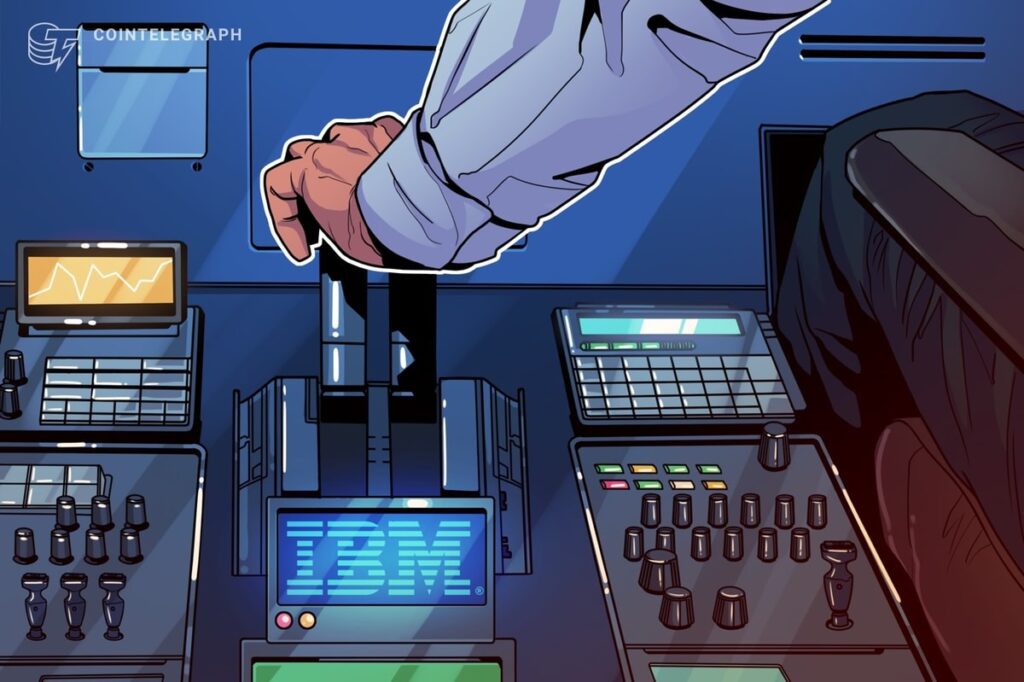IBM’s Crypto Platform To Bolster TradFi, Governmental Blockchain Adoption

Technology giant IBM launched a cryptocurrency platform for US institutions, marking one of the company’s strongest pushes yet into digital assets and blockchain infrastructure.
IBM’s platform will offer US businesses and governments crypto custody and payment services by the end of the year, aiming to simplify the integration of digital assets into the existing financial infrastructure.
The new platform, called the “Digital Asset Haven,” will enable institutions to directly access onchain yield from decentralized finance (DeFi) protocols across 40 public blockchain networks. It will also help meet the complex token compliance needs of institutions operating under the same platform.
The platform is expected to launch as a software-as-a-service (SaaS) offering in the fourth quarter of 2025, according to an IBM announcement Monday. It was built in collaboration with crypto wallet provider Dfns.
Stablecoin and tokenization adoption are driving more institutional crypto participation
The move reflects a broader shift across traditional finance (TradFi), where banks and asset managers are increasingly exploring tokenization and blockchain-based settlement systems.
Related: Bitcoin finds its footing as expected US-China tariff truce cools market panic
The rising adoption of stablecoins and tokenized real-world assets (RWAs) is driving a growing demand for institutional blockchain infrastructure such as Digital Asset Haven, according to IBM.
“For digital assets to be integrated into core banking and capital markets systems, the underlying infrastructure must meet the same standards as traditional financial rails,” said Clarisse Hagège, CEO of wallet provider Dfns, adding:
“Together with IBM, we’ve built a platform that goes beyond custody to orchestrate the full digital asset ecosystem, paving the way for digital assets to move from pilot programs to production at a global scale.”
Some of the platform’s key features include a unified framework for governance and policy management, integrated third-party solutions for identity verification and Anti-Money Laundering (AML), as well as yield generation opportunities and digital asset operations fortified by IBM’s secure infrastructure.
The growing institutional demand for tokenized offerings saw tokenized stocks rise 220% in July, a growth pattern reminiscent of the early DeFi boom, when TVL rose from $1 billion to $100 billion in under two years from 2020 to 2021, according to Binance Research.
Blockchain addresses holding tokenized stocks also surged to over 90,000 in July from 1,600 in June, signaling growing investor demand for tokenized equities.
Related: JPMorgan reportedly plans to let clients borrow against their Bitcoin and Ether
Chainlink co-founder Sergey Nazarov said during the RWA Summit 2025 in Cannes that blockchain-based compliance tools could make traditional transactions “10 times faster and cheaper” compared with legacy systems.
“If you compare what it costs and how complicated it is to make a compliant transaction in the TradFi world, our industry should be able to do it 10 times faster and cheaper,” Nazarov said.
On June 30, Chainlink revealed its Automated Compliance Engine (ACE), a modular and standardized framework for managing regulatory compliance, aiming to unlock $100 trillion worth of new capital to enter the blockchain economy
Magazine: Will Robinhood’s tokenized stocks REALLY take over the world? Pros and cons










